New Ford Owner's Guide: Understanding Your Warranty – 3/36 Bumper-to-Bumper vs. 5/60 Powertrain
Congratulations, New Ford Owner!
First things first, congratulations on your fantastic new Ford! It's a significant investment, and Ford stands by the quality and craftsmanship of its vehicles. Knowing your warranty details is a crucial part of smart ownership. It's not just about what breaks, but about understanding the safety net Ford provides, allowing you to focus on enjoying the drive and all the adventures your new vehicle will bring. Think of your warranty as your vehicle's health insurance – it's there when you need it most, covering unforeseen issues that arise from manufacturing defects.Why Understanding Your Ford Warranty Matters So Much
Ignoring your warranty details is like having a treasure map but never looking at it. Your Ford factory warranty is a comprehensive agreement designed to protect you from manufacturing defects and component failures that aren't a result of normal wear and tear or owner misuse. Knowing the specifics helps you:Save Money: Avoid paying for repairs that are already covered.
Gain Peace of Mind: Drive confidently, knowing you're protected.
Plan for the Future: Understand when certain coverages expire, which can influence maintenance decisions or even trade-in timing.
Maintain Value: Properly documented warranty service can enhance your vehicle's resale value.
It's about being an informed owner and making the most of the benefits that come with purchasing a new Ford vehicle. Let's break down the two main types of coverage.
The Foundation: 3-Year/36,000-Mile Bumper-to-Bumper Warranty
This is often referred to as your 'basic' or 'comprehensive' warranty, and for good reason! The 3-Year/36,000-Mile Bumper-to-Bumper Limited Warranty covers virtually all components of your new Ford vehicle from manufacturing defects, from the front bumper to the rear bumper. This includes parts, labor, and diagnosis for most mechanical, electrical, and technological systems within your vehicle.What it Covers: Think of almost everything that isn't a routine wear-and-tear item. This typically includes:
- Electrical systems (wiring, sensors, infotainment, power windows)
- Air conditioning and heating systems
- Steering and suspension components (excluding alignment unless due to a defect)
- Brake system components (excluding pads, rotors, and fluid, which are wear items)
- Audio and navigation systems
- Sensors and various control modules
- Interior components (seats, trim, dashboard elements)
- Powertrain components (engine, transmission, drivetrain) – *Yes, these are covered by Bumper-to-Bumper initially, then by Powertrain after 3/36.*
Duration: This warranty lasts for whichever comes first: three years from the original sale date or 36,000 miles on the odometer. So, if you hit 36,000 miles in two years, your bumper-to-bumper coverage ends then. If you drive only 20,000 miles in three years, it ends after three years. This makes it crucial to monitor both time and mileage.
Key Takeaway: This is your most extensive coverage, safeguarding against a vast array of potential issues that might arise from factory defects in your new Ford. It's your initial blanket of protection.
Longer-Term Protection: 5-Year/60,000-Mile Powertrain Warranty
While the Bumper-to-Bumper warranty is incredibly broad, it doesn't last as long as the Powertrain Warranty. The 5-Year/60,000-Mile Powertrain Limited Warranty kicks in for the most critical and expensive components of your Ford: the parts that make it move. This warranty offers an extended period of protection for the 'heart' of your vehicle.What it Covers: This warranty is focused on the internal components that transmit power to the wheels. Specifically, it covers:
- Engine: Cylinder block, cylinder heads, all internal lubricated parts, manifold, flywheel, timing gear and chain, turbocharger/supercharger (if equipped), water pump, fuel pump, seals, and gaskets.
- Transmission: Transmission case and all internal parts, torque converter, transfer case, transmission mounts, seals, and gaskets.
- Front-Wheel Drive: Half shafts, U-joints, constant velocity joints, wheel bearings, seals, and gaskets.
- Rear-Wheel Drive: Axle shafts, bearings, drive shaft, U-joints, rear axle housing and all internal parts, seals, and gaskets.
- All-Wheel Drive (AWD)/Four-Wheel Drive (4WD): All components listed under Front/Rear Wheel Drive, plus the AWD/4WD transfer case and its internal parts, and actuating devices.
Duration: This coverage lasts for five years from the original sale date or 60,000 miles on the odometer, whichever comes first. This means your powertrain components are protected for an additional two years or 24,000 miles *after* your bumper-to-bumper coverage typically expires.
Key Takeaway: This warranty is your safeguard against major, costly repairs related to your Ford's engine, transmission, and drivetrain. These are the components that are most expensive to replace or repair out of pocket, making this extended coverage incredibly valuable.
Key Differences and Overlap: A Quick Comparison
Understanding the interplay between these two warranties is essential. Here's a quick breakdown of their main distinctions:- Scope of Coverage: The Bumper-to-Bumper warranty is broad and covers almost everything (excluding wear items). The Powertrain warranty is much narrower, focusing specifically on the engine, transmission, and drive systems.
- Duration: Bumper-to-Bumper is shorter (3 years/36,000 miles). Powertrain is longer (5 years/60,000 miles).
- Overlap: For the first 3 years or 36,000 miles, your powertrain components are covered by *both* warranties. Once the Bumper-to-Bumper expires, the Powertrain warranty continues to protect those specific, vital components.
It's important to remember that neither warranty covers routine maintenance items (oil changes, tire rotations, air filters, spark plugs, brake pads, wiper blades) or damage resulting from accidents, misuse, lack of proper maintenance, or aftermarket modifications. Always consult your owner's manual for a precise list of exclusions.
Making the Most of Your Ford Warranty: Pro Tips
To ensure you get the maximum benefit and peace of mind from your Ford warranty, here are a few tips:Read Your Owner's Manual: This is your ultimate resource. It contains the exact terms, conditions, and exclusions for your specific vehicle.
Perform Scheduled Maintenance: Follow Ford's recommended service schedule. While routine maintenance isn't covered, neglecting it can void your warranty if a covered component fails due to lack of care. Keep meticulous records of all service.
Address Issues Promptly: If you notice a warning light or an unusual sound, don't wait! Taking your Ford to an authorized dealer at the first sign of a problem can prevent minor issues from becoming major, uncovered repairs.
Know Your Expiration Dates: Keep track of both the date and mileage limits for your warranties. This helps you plan for future maintenance or consider an extended warranty if you plan to keep your vehicle beyond these terms.
Understand Transferability: Ford's New Vehicle Limited Warranty is fully transferable to subsequent owners, which can be a significant selling point if you decide to sell your vehicle privately within the warranty period.
Conclusion
Understanding the difference between your 3-Year/36,000-Mile Bumper-to-Bumper and 5-Year/60,000-Mile Powertrain warranties is a key part of being a savvy Ford owner. This knowledge empowers you to drive with greater confidence, knowing exactly what protection you have and for how long. Remember, your warranty is a valuable asset, designed to give you peace of mind and protect your investment. Keep up with your maintenance, address issues promptly, and don't hesitate to consult your owner's manual or your authorized Ford dealer if you have any questions. Happy driving in your incredible new Ford!Where can I find my VIN?

Related Topics
- Tuning and Aftermarket Mods: Will You Void Your Ford's Warranty? (The Magnuson-Moss Act)
- Protect Your Investment: Maintenance Must-Dos to Keep Your Cadillac Warranty Valid
- Selling Your Cadillac? Why Warranty Transferability Adds Resale Value
- Don't Void Your Coverage: Top 5 Ways Owners Accidentally Nullify Their Honda Warranty

